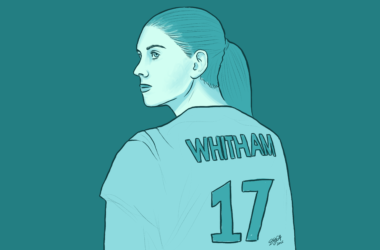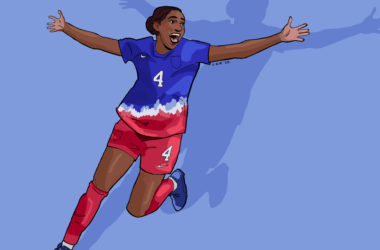The National Women’s Soccer League (NWSL) held its annual college draft on Jan. 16 in Chicago, and for the second year in a row, an underclassman was selected first overall. This year’s first pick was 19-year-old Sophia Smith, who, along with being the first teenager drafted into the NWSL, is coming off a national-title-winning sophomore season at Stanford University. This growing trend of drafting young players with remaining collegiate eligibility is indicative of a changing landscape in professional women’s soccer, especially in North America.
It was, and still is, common for female professional soccer players to have careers outside of playing. Until relatively recently, many leagues did not pay a living wage, sponsorships were not particularly lucrative, and even if a player could earn a decent salary, it was unlikely that they could fund a retirement starting before the age of 40.
In North America, and especially the United States, collegiate athletics are a common gateway to a professional sports career. The introduction of Title IX in 1972 required universities receiving federal funding to offer equal access to coaching, equipment, facilities, and other services to both women’s and men’s teams. This eventually created an environment in which university athletics became a viable route to a professional career for female athletes and introduced college drafts in various iterations of professional soccer leagues in the United States as well as in the Women’s National Basketball Association (WNBA).
Players declaring for the draft with remaining NCAA eligibility, however, suggests a shift in the way women are approaching their careers and raises the question of whether the college system is still the best way to facilitate the development of the game. Collegiate athletics as a development program and pipeline to professional careers has provided female players with a safety net in the form of an education that, for many years, was necessary. But athletes who feel that their playing careers can now support them without a university education calls into question the value the college system still holds.
The NWSL is home to the vast majority of players on the United States Women’s National Team (USWNT), who are back-to-back reigning world champions. While most players on the roster that won the 2019 FIFA Women’s World Cup spent at least some time playing in the NCAA, perhaps they could have been better served by an academy system integrated into the structure of professional club teams, as is the practice in Europe. It is a model that has helped the best men’s leagues develop over the years, as players have been able to invest more time in training and playing. While the NCAA has served to centralize the development of women’s soccer in North America, an academy system that decentralizes that development has the potential to make soccer more accessible and broaden the talent pool for professional leagues. At a time when players are willing to take risks to pursue their professional careers, youth development programs that feed directly into the club system may be a step toward developing women’s soccer and continuing to attract interest from players, sponsors, and supporters alike.
Of course, there are valid criticisms of these club academy systems, and there is an argument to be made that women’s leagues should not necessarily seek to imitate men’s leagues. Putting too much emphasis on training and playing could deprive young people of opportunities to pursue other interests, and education has rarely had negative impacts. But, should women’s soccer continue on its current trajectory of growth, investing in academies could help foster homegrown talent for clubs in one of the world’s most competitive leagues.









